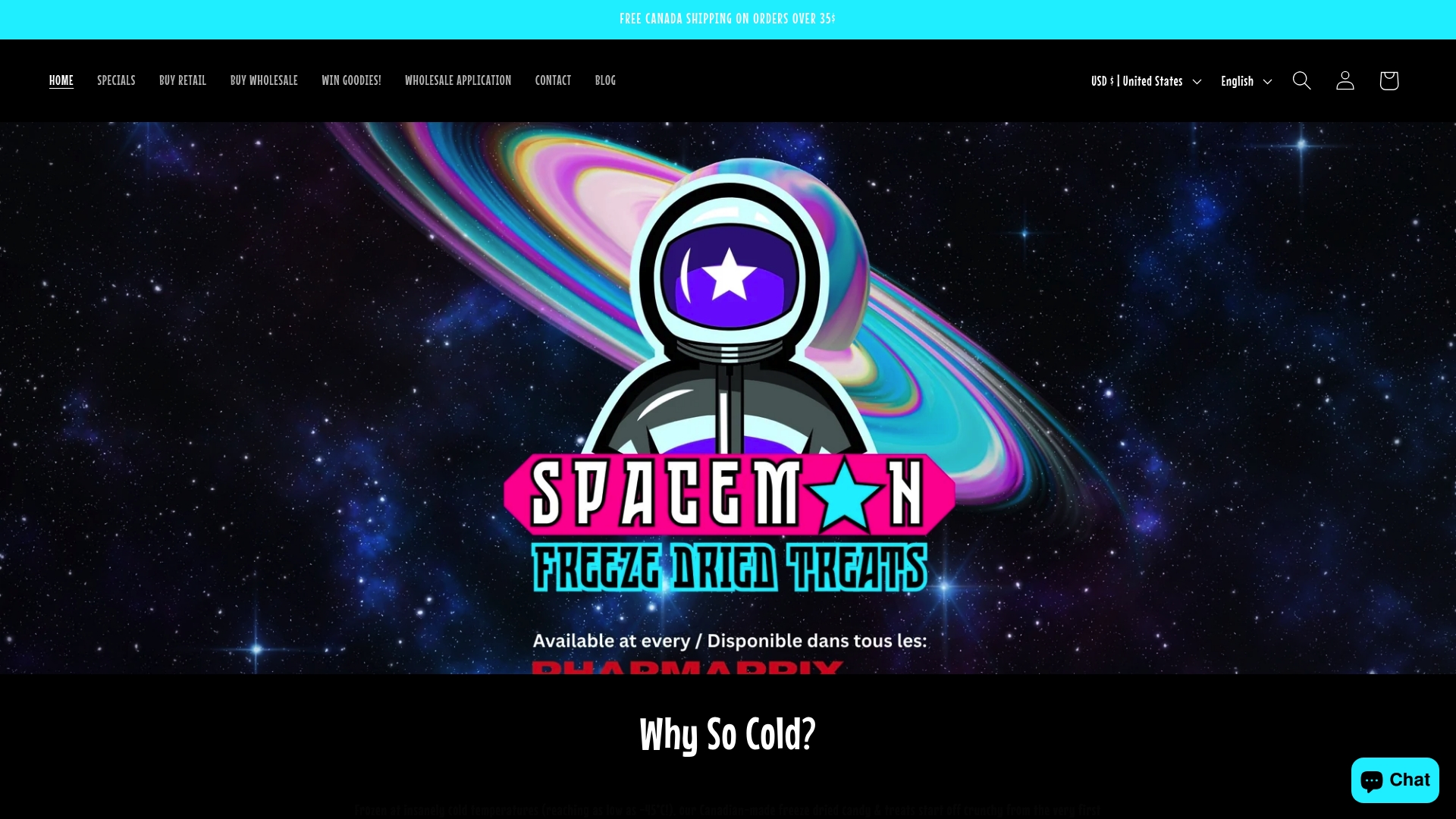Did you know that freeze-dried candy can last for years without losing its crunch or intense flavor? This unique process turns chewy gummies and soft marshmallows into crispy, airy snacks that deliver a powerful taste in every bite. As more candy lovers crave adventurous textures and longer shelf life, freeze-dried treats are quickly gaining popularity for their fun eating experience and creative possibilities.
Key Takeaways
| Point | Details |
|---|---|
| Freeze Drying Process | Freeze drying involves freezing candy and then removing moisture through sublimation, resulting in a crispy texture and concentrated flavors. |
| Ideal Candy Types | Fruit-based and gummy candies, as well as high-sugar, low-fat options, are best suited for freeze drying due to their structural properties. |
| Market Opportunities | Retailers can benefit from freeze-dried candies through higher profit margins, innovative product offerings, and appeal to trend-conscious consumers via social media. |
| Safety Considerations | Ensuring moisture management and implementing rigorous quality control is crucial for maintaining the safety and quality of freeze-dried candies. |
Table of Contents
- Freeze Drying Candy: Core Concepts Explained
- Best Candy Types for Freeze Drying
- How Freeze Drying Changes Candy Texture
- Benefits and Challenges for Retailers and Brands
- Safety, Packaging, and Legal Considerations
Freeze Drying Candy: Core Concepts Explained
Freeze drying is a fascinating scientific process that transforms ordinary candy into an extraordinary crispy, flavor-concentrated snack. According to research from What is Freeze Drying Candy? Understanding the Process, this technique operates through three precise stages that fundamentally change candy’s texture and taste.
The process begins with freezing the candy at extremely low temperatures, which prepares it for the next critical phase. As insights from candy science reveal, the vacuum chamber then creates a unique environment where sublimation occurs. This means water transitions directly from solid ice to vapor, bypassing the liquid state entirely. The result? A dramatically transformed treat with an incredibly light, airy structure that maintains the original candy’s shape while intensifying its flavor profile.
Key characteristics of freeze-dried candy include:
- Dramatic texture transformation from dense to crispy
- Concentrated flavor intensity
- Extended shelf life
- Preserved original shape and color
- Unique, crunchy eating experience
The final stage involves removing any residual moisture, which ensures the candy remains shelf-stable and retains its newfound crispy texture. Professional freeze-drying transforms traditional candies into innovative snacks that offer a completely novel sensory experience for candy lovers and food enthusiasts alike.
Best Candy Types for Freeze Drying
Not all candies are created equal when it comes to freeze-drying, and some varieties transform into absolutely magical snacks. According to Complete Guide to Freeze Dried Candies Canada, certain candy compositions make them perfect candidates for this transformative process.
According to research from Urban Splatter, fruit-based candies and gummy varieties are particularly well-suited for freeze-drying. Specific recommendations include:
- Hard candy lollipops
- Fruit leather strips
- Gummy bears
- Sour Patch Kids
- Marshmallows
Research from Chef’s Resource highlights that high-sugar, low-fat candies excel in freeze-drying, particularly those with specific textural characteristics. These include salt-water taffy, caramels, and candies with unique fillings that dramatically transform when moisture is removed. The science behind this involves the candy’s molecular structure - low moisture content and high sugar concentration create an ideal environment for that satisfying, crispy transformation that makes freeze-dried candies so irresistible.
The key is selecting candies that can withstand the dramatic temperature and pressure changes while maintaining their fundamental shape and flavor profile.
![]() Experimenting with different types will help you discover your personal freeze-dried candy favorites.
Experimenting with different types will help you discover your personal freeze-dried candy favorites.

How Freeze Drying Changes Candy Texture
Freeze drying transforms candy’s texture in ways that seem almost magical, turning familiar treats into crispy, flavor-packed experiences. What Is Freeze Dried Candy? A Complete Guide for Retailers explores how this scientific process fundamentally alters a candy’s molecular structure, creating an entirely new sensory adventure.
According to research from Rocket Krunch, different candies undergo remarkable transformations. Gummy worms become light and airy with concentrated flavors, while marshmallows transform into cereal-like crisp pieces. The scientific magic happens when water is removed, leaving behind tiny chambers where ice once existed, creating an incredibly porous and crunchy texture.
Texture changes vary dramatically across candy types:
Here’s a summary comparison of how freeze drying changes different types of candy:
| Candy Type | Before Freeze Drying | After Freeze Drying |
|---|---|---|
| Gummy Candies | Chewy Dense |
Ultra-crispy Light & airy |
| Marshmallows | Soft Fluffy |
Brittle Puffy texture |
| Hard Candies | Solid Crunchy |
More brittle Minimal flavor change |
| Fruit-based Candy | Flexible Dense |
Crunchy Intense sweetness |
- Gummy candies: From chewy to ultra-crispy
- Marshmallows: Soft to puffy and brittle
- Hard candies: Minimal flavor change, increased brittleness
- Fruit-based candies: Enhanced crunch, intensified sweetness
The unique porous structure created by freeze-drying isn’t just about changing texture - it’s a flavor concentration process. By removing moisture, the candy’s inherent flavors become more pronounced, delivering an intensified taste experience that surprises and delights the palate. Each bite becomes a crispy, flavor-packed moment that reimagines how we experience familiar candies.
Benefits and Challenges for Retailers and Brands
Freeze-dried candy represents an exciting frontier for retailers and brands looking to capitalize on emerging food trends. 7 Key Packaging Trends for 2025 You Need to Know highlights the critical importance of innovative product development in today’s competitive market.
According to recent industry research, the social media-driven demand for freeze-dried candies has created significant opportunities and challenges. Major brands like Jolly Rancher have already recognized this potential, launching specialized freeze-dried versions that leverage the viral nature of platforms like TikTok. The key advantages for retailers include:
- Higher profit margins
- Expanded product innovation
- Appeal to younger, trend-conscious consumers
- Extended product shelf life
- Unique sensory experience
The primary challenges include specialized equipment requirements, potential increased production costs, and maintaining consistent product quality. Brands must carefully balance innovation with practical manufacturing considerations. Retailers need to invest in consumer education, demonstrating the unique value proposition of freeze-dried candies beyond traditional offerings. Successfully navigating these challenges could position forward-thinking brands at the forefront of a potentially transformative confectionery trend that bridges traditional candy consumption with modern culinary experimentation.
Safety, Packaging, and Legal Considerations
Freeze-dried candy presents unique safety challenges that require meticulous attention to detail. Understanding Food Packaging Regulations in Canada provides essential insights into the critical considerations manufacturers must address.
According to research from scientific sources, moisture management is the cornerstone of freeze-dried candy safety. While the freeze-drying process dramatically reduces moisture content, potentially extending shelf life up to decades, residual microbial risks remain. Key safety considerations include:
- Complete secondary drying
- Hermetic packaging
- Moisture absorption prevention
- Temperature-controlled storage
- Regular quality inspections
The legal landscape surrounding freeze-dried products demands rigorous quality control protocols. Although low moisture typically inhibits microbial growth, certain pathogens can persist in dried environments. Manufacturers must implement comprehensive testing procedures, ensuring that packaging maintains product integrity and prevents moisture re-absorption. This involves selecting appropriate barrier packaging materials, implementing strict sealing standards, and maintaining precise storage conditions that preserve the unique textural and flavor characteristics of freeze-dried candies while mitigating potential health risks.
Ready to Transform Your Candy Business with Freeze Drying?
Are you struggling to keep up with the growing demand for innovative snacks like freeze-dried candy? This article uncovered how freeze drying amplifies flavor, intensifies texture, and creates shelf-stable products that today’s customers crave. If you want to stand out with unique, crispy treats or need hassle-free packaging solutions, you do not need to look any further.

Experience all the benefits of a professional partner. Discover reliable freeze dried candy manufacturing and co-packing that is tailored to your needs. Whether you want private labeling, customized bagging, or direct-to-consumer solutions, Space Man brings these market trends straight to your business. Visit our site and seize this opportunity now. Bring your next freeze-dried candy innovation to life today.
Frequently Asked Questions
What types of candy are best for freeze drying?
Fruit-based candies and gummy varieties tend to freeze dry exceptionally well. Recommended options include hard candy lollipops, gummy bears, Sour Patch Kids, marshmallows, and fruit leather strips.
How does freeze drying change the texture of candy?
Freeze drying transforms candy from its original texture to a light, crispy, and airy structure. Gummy candies become ultra-crispy, while marshmallows turn into brittle, puffy pieces, enhancing their flavor intensity.
Can all candies be freeze dried?
Not all candies are suitable for freeze drying. High-sugar, low-fat candies with specific textural characteristics, like salt-water taffy and caramels, excel in freeze drying. It’s essential to choose candies that can withstand the temperature and pressure changes of the process.
What are the benefits of freeze-dried candy for retailers?
Freeze-dried candy offers many advantages for retailers, including higher profit margins, the potential for product innovation, appeal to trend-conscious consumers, and an extended shelf life. Additionally, it provides a unique sensory experience that can attract customers.

